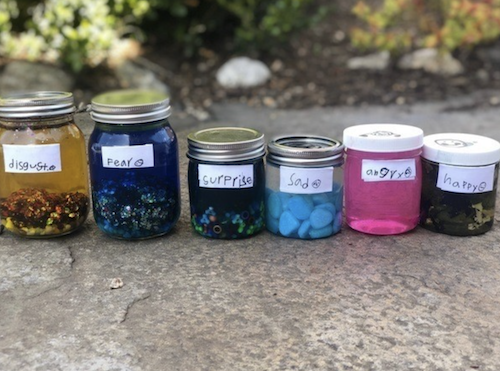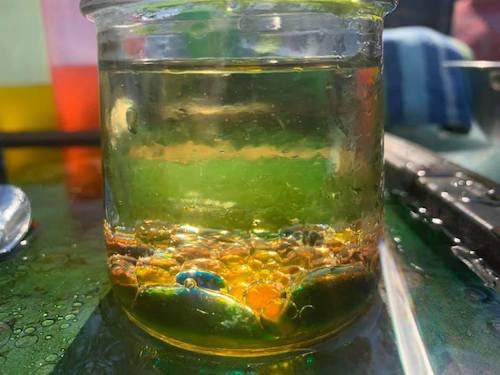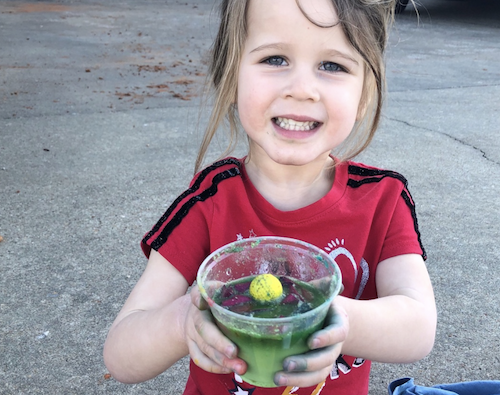Make An Emotion Potion!
-
Age: 0 to 8+
-
Time: 1 hour+
-
Materials: Clear mason jar or recycled container, water, nature treasures (e.g. flower petals, berries, leaves, grasses, bits of evergreen), stick, Optional: Food coloring, liquid watercolors or colorful spices
- Skills: Creativity, Sensory, Empathy
This week at Tinkergarten Anywhere, we'll explore the full range of emotions we experience at different times and in different situations—and we'll introduce a tool we can use to express and process them. We'll start with water and a jar or container, then add various ingredients to whip up “emotion potions”—all to help kids recognize and express how they are feeling today.
The Guide
Step 1: Watch the Tinkergarten Anywhere Emotion Potions video lesson.
Hop into your My Tinkergarten trial dashboard to watch the Emotion Potions video lesson. Kids can watch how Meghan and other explorers make concoctions to express their emotions. Then, kids can whip up their own potions to show how they feel!
Not yet enrolled in Tinkergarten Anywhere? Sign up here.
Not yet enrolled in Tinkergarten Anywhere? Sign up here.
Step 2: Grab a jar and prompt thinking.
Offer your child a jar or other clear container and let them know that this jar can be a potion pot to make an emotion potion— a mixture that shows how they feel inside!
Ask your child how they are feeling today and encourage them to try to put words/descriptions to the feelings. Ask questions like, “What is it like inside us when we feel these different feelings? What could happy look like? What color might it be?” or “What kinds of things might be rumbling around inside you when you’re angry?”
Step 3: Collect potion ingredients.
Head outside together to gather natural materials that your child thinks would make good ingredients for their emotion potion. As they collect, invite them to tell you about their choices and why the objects remind them of a particular emotion.
Step 4: Whip up an emotion potion!
Fill the jar half-way with water and welcome kids to start adding their ingredients, using a stick to stir up their concoction.
Introduce spices or food coloring to give kids the chance to add color and scent! With or without that, you can just let kids lead their play from here. If they are more into making potions than talking emotions, that is fine! Just the invitation you gave helped attune them to emotions!
Extend Play!
If kids are really enjoying making an emotion potion, try some of these ideas to keep the play going:
- More emotion potions—Gather more jars and offer kids more chances to make emotion potions to match all 6 emotions (happy, sad, angry, surprised, scared, disgusted). Read the full DIY activity here.
- Emotion art—Use paint, markers, collage or any other art materials to make art that shows how you feel.
- Make a volcano potion—To express really big emotions, put baking soda and dish soap in your potion pot. Then, add vinegar to release an explosion of feelings!
Why is this activity great for kids?
Making emotion potions helps kids explore the full range of emotions we all experience at different times and in different situations, helping them to develop emotional empathy. Emotion potions are also a tool kids can use to express and process emotions, especially the big ones. It's not always easy to find the words to express how we feel. Making potions or art/music to represent emotions can be a helpful way to help kids not only recognize but regulate strong emotions of all kinds. The process of potion making is in itself centering and calming to the senses, helping kids to regulate whatever emotions they may be experiencing in the moment.





